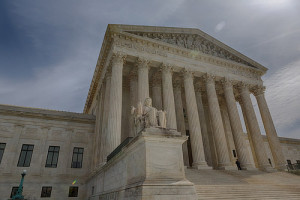Author: Steven J. Cernak
Recently, I was researching antitrust developments in 2020 to update my Antitrust in Distribution and Franchising book. While there were several developments last year, what struck me was the large number of potentially drastic changes to antitrust distribution law that started to play out in 2020 but are continuing into 2021. Whether you think of them as shoes to drop or dogs yet to bark, these three potential changes are the key ones to watch in 2021.
Legislative Changes to the Antitrust Laws?
In the Fall of 2020, the U.S. House Judiciary Committee issued its Majority Report on its lengthy Investigation into Digital Markets. While the bulk of the Report focused on a few big tech companies like Google, Facebook, and Amazon, the Report also recommended that Congress override several “classic antitrust cases” that allegedly misinterpreted antitrust law applicable to all companies. Because we have covered several of those recommendations in detail already (see below), I will just focus on potential applications to distribution here.
- Classic Antitrust Case: Will Congress Override Brooke Group, Matsushita, and Weyerhaeuser—and Resurrect Utah Pie?
- Classic Antitrust Cases: Trinko, linkLine and the House Report on Big Tech.
- What Happens if Congress Overrides the Classic Antitrust Platform Market Case of American Express?
First, the Report recommended overriding Trinko, a case that has made refusal to deal claims against monopolists very difficult to bring, as we detail in the next section. In Trinko, the Court practically limited such claims to those that are nearly identical to the claims in Aspen Skiing, namely that the monopolist ended a prior voluntary course of dealing with the plaintiff for no good reason. Might an override of Trinko make it easier for a plaintiff-retailer to object if a monopolist defendant-retailer kicks the plaintiff off the defendant’s platform?
Second, overriding Trinko might also alter one of its more famous holdings, that the mere possession of monopoly power and the ability to impose “high” prices does not violate Sherman Act Section 2. While most states have price gouging laws, Trinko found that charging a “high” price was not “monopolization.” If Congress overrides Trinko—and adopts the broader “abuse of dominance” standard for Section 2 cases, as the Report also recommends — might we end up with a federal price gouging law?
Third, the Report also is concerned about monopolists charging too low a price and recommends overriding Brooke Group and its “recoupment” requirement for successful predatory pricing claims. As we covered previously, the Supreme Court was worried about discouraging low prices for consumers by companies with large market shares and so adopted a two-part test in Brooke Group that is difficult for plaintiffs to meet. Plaintiffs must show very low prices, usually below average variable costs, plus the probability that the defendant later will be able to raise prices to recoup its losses. If Congress overrides the recoupment prong of Brooke Group, might we see less aggressive pricing from companies with high market shares?
Fourth, overriding the recoupment prong also might revive long-dormant primary line price discrimination claims under Robinson-Patman. While there are few Robinson-Patman claims in total today, all of them are secondary line claims: Manufacturer 1 sells the same commodity to Retailer A at a lower price than to Retailer B, who claims an injury to itself and competition. In Brooke Group, the Court looked at primary line discrimination claims and applied the same two-part test for predatory pricing to primary line claims: Manufacturer 1’s lower prices to Retailer A must be below its average variable costs and Manufacturer 1 must be able to later recoup its losses before a court can find harm to competition and Manufacturer 2. Before Brooke Group, the Supreme Court’s test had been the one from the oft-criticized Utah Pie opinion that focused on the defendant’s intent to lower prices for the entire market. If Congress overrides the recoupment prong of Brooke Group, might we see price discrimination claims from manufacturers who cannot, or do not want to, match the lower prices of their competitors?
As of this writing, Sen. Amy Klobuchar has introduced legislation that would drastically change the antitrust laws. While most of the proposed changes relate to merger review, the proposed legislation would expand the definition of “exclusionary conduct” subject to the antitrust laws and create a presumption that such conduct by “dominant firms” is anticompetitive. Might we see changes to the antitrust laws that drastically change how manufacturers, distributors, and retailers deal with one another?
Supreme Court Weighs in on Refusal to Deal Law?
As we have discussed several times (see here, here, and here), the courts are skeptical of claims that a monopolist’s refusal to deal with some other company, usually a competitor, is monopolization. Generally, even a monopolist has no duty to deal with its competitors. One of the few exceptions is when the facts are very close to Aspen Skiing where the Court did find such a violation of a duty to deal.
In Aspen Skiing, the Court found a refusal to deal violation because of what it saw as the defendant’s decision to terminate a “voluntary (and thus presumably profitable) course of dealing” and its “willingness to forego short-term profits to achieve an anti-competitive end.” Many refusal to deal claims flounder because the defendant and plaintiff had never entered any sort of “course of dealing.” But even if that prong is met, many lower court judges, such as then-Judge Gorsuch in the 10th Circuit’s Novell case, emphasize that a monopolist might “forego short-term profits” but for pro-competitive ends. Those cases, therefore, require a plaintiff to show that defendant’s conduct is “irrational but for its anticompetitive effect.”
The District Court in Viamedia, Inc. v. Comcast Corp. granted defendant’s motion to dismiss the refusal to deal claim, despite termination of a prior voluntary course of dealing, because the “potentially improved efficiency” resulting from the termination showed that the move was not “irrational but for its anticompetitive effect.”
The Seventh Circuit reversed, finding that a plaintiff only must allege that defendant’s termination was “predatory.” As the concurring judge described it, a plaintiff need only allege some anticompetitive goal for the termination. A defendant’s assertion of other, procompetitive, rationales for the conduct was a question for summary judgment, not a motion to dismiss. If allowed to stand, the court’s ruling would make it much easier for refusal to deal plaintiffs to survive to discovery, thereby encouraging more such claims.
Comcast petitioned the Supreme Court for certiorari and in December 2020, the Court sought the views of the Solicitor General. Any response from the Solicitor General could indicate whether the Biden Administration supports any change, large or small, as to how the Court has interpreted the Sherman Act in refusal to deal cases. Might the Court weigh in on refusal to deal monopolization cases and, if so, how would such an opinion affect the chances of new antitrust legislation?
Changes Driven by Amazon?
Of course, we could not post about distribution and antitrust and not mention Amazon. As we discussed earlier, Amazon’s Jeff Bezos was one of several big tech executives who testified at a Fall 2020 Congressional hearing. At the time, we described some potential antitrust claims raised by that testimony and concluded that ones alleging illegal tying or monopolization had the best chance of succeeding—and that even those faced some real questions.
 The Antitrust Attorney Blog
The Antitrust Attorney Blog












